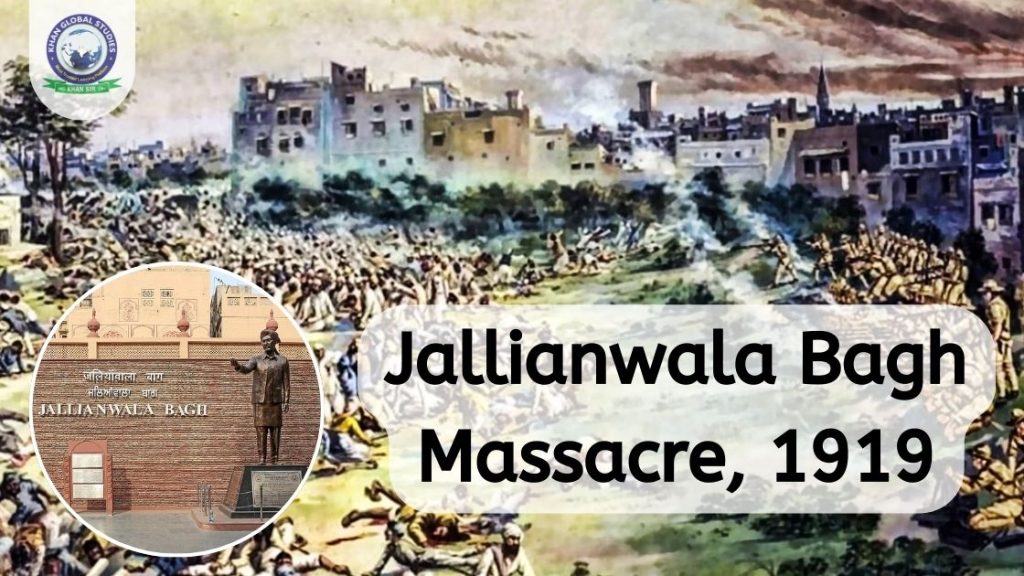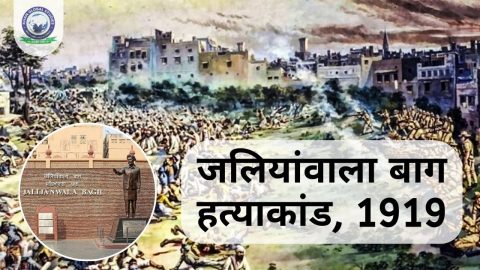The Jallianwala Bagh massacre of 1919 is one of the most painful events in Indian history. This tragic incident, which took place on April 13, 1919 in Amritsar, Punjab under British Colonial Rule, left an indelible mark on the Indian freedom struggle. Thousands of innocent people gathered at Jallianwala Bagh were brutally killed and injured by British troops under the command of General Reginald Dyer. This article provides detailed information on the events leading up to the massacre, the events leading up to the massacre and its aftermath, as well as its historical significance.
Historical Background
Colonial Tensions in India in the Early 20th Century
The early 20th century was a period of intense political agitation in India. The British colonial government had implemented several repressive measures to curb the growing nationalist movement. The Rowlatt Act of 1919, also known as the Anarchical and Revolutionary Crimes Act, allowed the government to imprison any suspected revolutionary without trial. This draconian law led to widespread resentment and massive protests across India.
Amritsar: A Turbulent City
Amritsar, a major city in Punjab, was a hotbed of political activity. In April 1919, the city was already tense due to nationwide protests against the Rowlatt Act. The situation worsened when two prominent Indian leaders, Dr. Saifuddin Kitchlew and Dr. Satya Pal, were arrested on April 10, 1919. Their arrest led to violent clashes between protesters and British authorities, resulting in several deaths and injuries.
Jallianwala Bagh Massacre
Gathering at Jallianwala Bagh
On April 13, 1919, thousands of people gathered at Jallianwala Bagh, a public park in Amritsar, to peacefully protest against the arrest of Kitchlew and Satya Pal and to celebrate the festival of Baisakhi. The gathering included men, women and children from various walks of life who were unaware of the imposition of martial law in the city.
General Dyer’s Merciless Orders
General Reginald Dyer, the acting Brigadier General, was determined to teach the Indian masses a lesson. Upon receiving information about the gathering of people at Jallianwala Bagh, he arrived at the spot with a platoon of troops. Without any warning, Dyer ordered his troops to open fire on the unarmed crowd. The firing continued for about ten minutes, with the troops directly targeting the densest part of the crowd and some exit gates, causing maximum casualties.
Casualties and Chaos
The massacre resulted in hundreds of deaths and thousands of injuries. The official British report claimed around 379 deaths and over 1,200 injuries, but Indian estimates put the death toll at over 1,000, and countless more were injured. The narrow paths and high walls of the Bagh trapped people, making escape almost impossible. To escape the bullets, many jumped into a well located within the Bagh, causing many to drown.
Consequences and impact
Immediate Reactions
The Jallianwala Bagh Massacre shocked the whole of India and the world. It exposed the brutal nature of British colonial rule and drew widespread condemnation. The British government initially defended Dyer’s actions but faced heavy pressure from within India and internationally. The incident galvanized Indian nationalists and played a key role in unifying various factions against colonial rule.
Hunter Commission investigation
In response to the outrage, the British government set up the Hunter Commission to investigate the incident. General Dyer defended his actions, saying they were necessary to prevent the revolt. However, the commission condemned Dyer’s actions as “inhuman” and “excessive”, leading to his forced retirement from the army. Despite this, Dyer was hailed as a hero by many British imperialists and a fund was raised in his honour.
Rise of the Indian Independence Movement
The Jallianwala Bagh massacre was a turning point in the Indian Independence Movement. Leaders such as Mahatma Gandhi and Rabindranath Tagore condemned this atrocity, following which Gandhi launched the Non-Cooperation Movement in 1920. Tagore renounced his knighthood in protest. The massacre intensified the demand for complete Independence (Purna Swaraj) from British rule and fostered a sense of unity among Indians.
Long-Term Legacy
The legacy of the Jallianwala Bagh massacre continues to resonate in India. The site is preserved as a memorial in honour of the victims. The event is a powerful reminder of the sacrifices made by countless Indians in their struggle for independence. It also serves as a historical lesson on the devastating impact of colonialism and the importance of human rights and justice.
Conclusion
The Jallianwala Bagh Massacre of 1919 is a dark chapter in the history of British colonialism in India. It highlights the brutal methods used to suppress dissent and the resilience of the Indian people in their fight for freedom. The massacre not only changed the course of the Indian Independence Movement but also left a lasting impact on the collective memory of the nation. Remembering and understanding this event is important to honour the victims and acknowledge the historical significance of their sacrifice.





